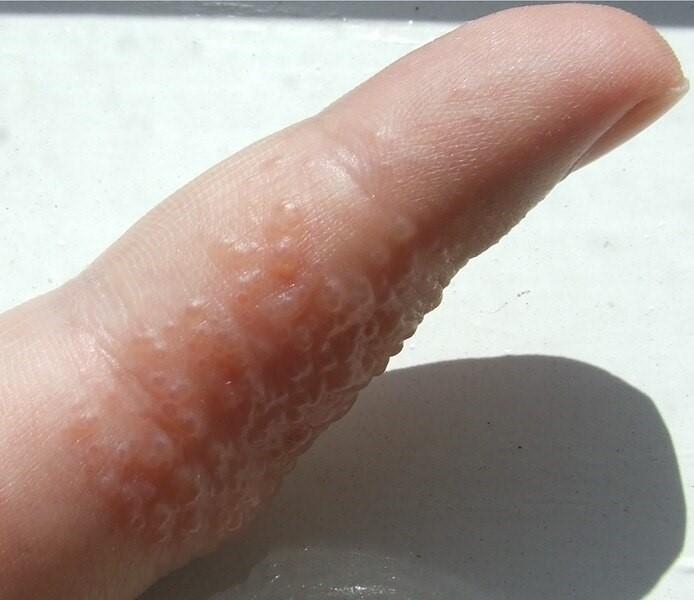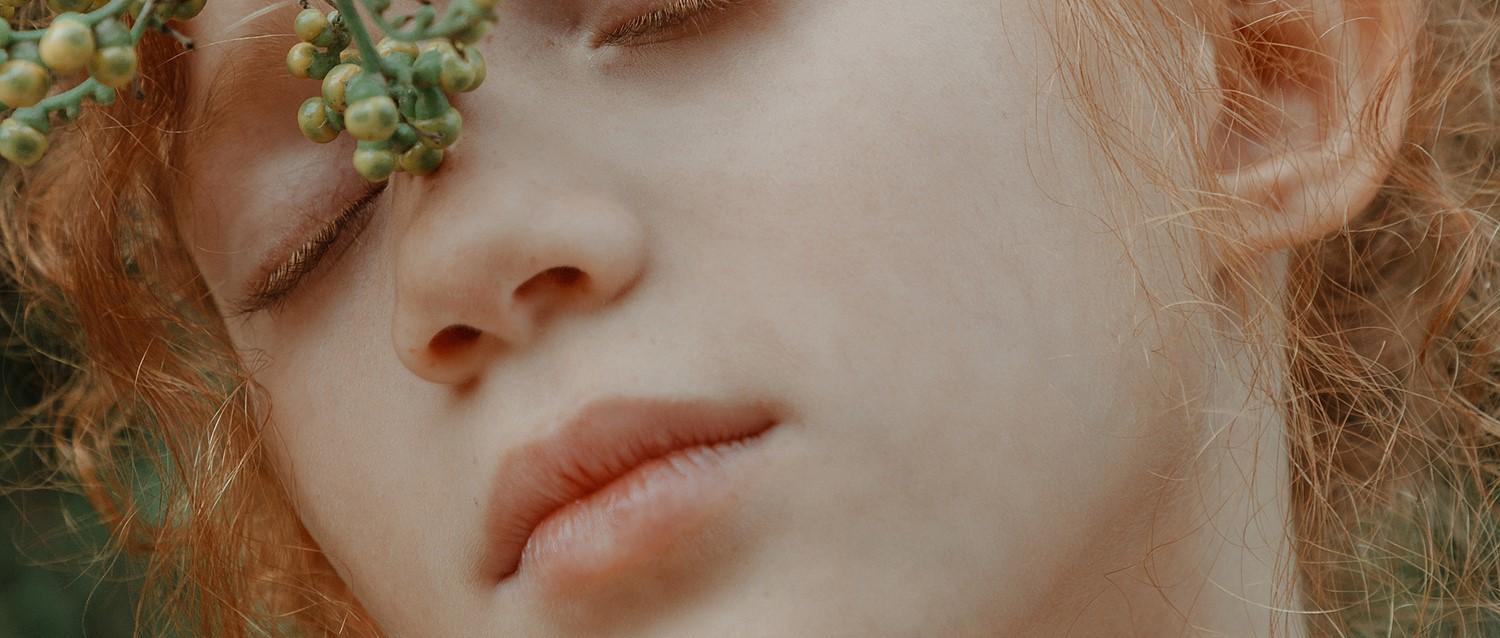Pompholyx
Peer reviewed by Dr Philippa Vincent, MRCGPLast updated by Dr Mohammad Sharif Razai, MRCGPLast updated 11 Jan 2024
Meets Patient’s editorial guidelines
- DownloadDownload
- Share
- Language
- Discussion
In this series:Atopic eczemaEczema triggers and irritantsEmollients and eczema creamsTopical steroids for eczemaDiscoid eczemaEczema herpeticum
Pompholyx is a type of eczema where there are itchy blisters on the hands and feet, followed by inflamed and dry skin. The condition is usually long-term, with symptoms that come and go at various times.
The first step in managing pompholyx is to identify and avoid things that make it worse. Treatment includes creams and ointments to reduce inflammation and irritation. If the symptoms are severe and persistent, a short course of steroid tablets might be helpful.
In this article:
Continue reading below
What is pompholyx?
Pompholyx is a type of eczema which affects the hands and feet, causing tiny blisters (1-2mm) and irritation that usually lasts two to three weeks. Eczema is a condition causing skin inflammation.
Pompholyx is also known as dyshidrotic eczema, dyshidrotic dermatitis or vesicular eczema of the hands and feet. Other names are cheiropompholyx if it affects the hands, or pedopompholyx if it affects the feet. Some use the term pompholyx only for severe outbreaks of large blisters (bullae) on the hands and feet.
Finger_Pompholyx

Maslesha, CC BY-SA 3.0, via Wikimedia Commons
What causes pompholyx?
The exact cause is not known. However, there are some factors that might be involved in causing or triggering the outbreaks (vesicular eruption) in some people. These are:
Metals such as nickel or cobalt either on the skin or in food.
Contact with common irritants such as soap, solvents and detergents.
Excessive sweating (hyperhidrosis).
Fungal infection of the skin (see below).
Emotional stress.
Smoking, contraceptive pills and aspirin.
Exposure to ultraviolet A light.
Frequent and prolonged contact with water.
Some research suggests that people prone to allergies (atopy) are more likely to get pompholyx, but other studies do not find this connection.
Continue reading below
Who develops pompholyx?
It is not clear exactly how common pompholyx is. However, it probably affects about 2 in 10 people who have hand eczema. The condition seems to affect anyone, regardless of age and gender.
What are the symptoms of pompholyx?
At first, there are tiny blisters on the skin of the hands or feet, often on both sides. They are located on the fingers or palms of the hands (usually on the sides of the fingers) and on the toes or soles of the feet. There is no redness around them and they do not occur elsewhere on the body.
The blisters may feel very itchy or there may be a burning or prickling sensation.
Sometimes the small blisters can merge to form larger ones.
As the blisters start to heal, the skin goes through a dry stage where there are cracks or peeling skin.
Continue reading below
What problems can pompholyx cause?
If there is severe pompholyx near the fingernails or toenails, then the nails may have ridges, or there may be swelling at the base of the nail called paronychia.
Sometimes the blisters or skin cracks can become infected. If so, there may be yellow fluid (pus) in the blisters or cracks. Or, there may be increasing redness, pain, swelling or crusting of the affected skin. See a doctor urgently if you have these symptoms or if you suspect an infection.
How is pompholyx diagnosed?
It is diagnosed by the medical history and the appearance of the skin. Typically, there is no need for medical tests. However, tests might be done especially to rule out other conditions.
Skin scrapings could be taken to test for fungal infections, especially if only one side is affected. A potassium hydroxide (KOH) test can also be used if a fungal infection is suspected.
Patch testing can find out if the cause is a contact allergy, such as hygiene products and metals.
A small piece of skin (a biopsy) is rarely necessary. It can be helpful if other skin conditions, such as psoriasis, are suspected.
What is the treatment for pompholyx?
Pompholyx can often get better on its own, but treatment can help reduce symptom duration, recurrence and discomfort.
Lifestyle measures
Avoid anything that seems to make the symptoms worse. Try to limit time spent in wet conditions and using strong cleansers. Make sure to wear protective gloves and footwear.
Moisturisers and barrier creams
As with eczema generally, moisturising creams or ointments are helpful for dry, peeling or cracked skin that act as a barrier against water or chemicals.
There are many different brands which can be bought over the counter or prescribed. See your pharmacist or doctor for suggestions.
Compresses and soaks
Potassium permanganate soaks may be useful for blisters or wet, weepy skin but not on dry skin. They help dry out blisters and have an antiseptic effect. For a soak or compress, choose one of the following options and use it for 15 minutes, four times a day:
Soak your hands or feet directly in the solution.
Or, soak a clean cloth in the solution and apply it to the affected area (compress).
You can use a potassium permanganate solution, available at pharmacies without a prescription. It stains skin and clothes. It comes as crystals, liquid, or tablets. Add it to water – just a few crystals per litre of water, or dilute tablets or liquid to make a 0.01% solution. Do not use the concentrated liquid directly.
Steroid medication
Topical steroids can be helpful because they reduce inflammation, which can ease irritation and help the skin to heal. Steroids are best used as short-term treatments or in low doses; otherwise, side-effects may occur.
The usual steroid treatment for pompholyx is a short course (two weeks) of a high-strength steroid cream or ointment, used on the affected areas of skin. This is then followed by a less strong steroid cream or ointment for the remainder of the treatment course. If your skin is blistered or wet (weeping), a cream type will work best. For dry or thick skin, ointment works better.
High-strength steroids should not be used for more than two weeks without medical advice.
In severe cases of pompholyx that cannot be controlled with creams and ointments, steroid tablets may be used. They are effective but, again, may have side-effects, so they are only used if necessary.
Antibiotic medicines and antifungal treatment
If there are signs of infection (as above), an antibiotic can help.
In some cases, pompholyx might improve if fungal infections of the feet, often known as athlete's foot (tinea pedis), are treated. This type of infection is common and usually mild.
Antifungal creams such as clotrimazole or terbinafine can be used to treat this infection.
Other treatments
Antihistamine tablets
These medications can be used to relieve itching and are available in pharmacies without a prescription.
Tacrolimus and pimecrolimus ointments
If steroid creams and ointments are not suitable or long-term treatment is needed, another type of medication,such as tacrolimus or pimecrolimus, in ointment form can be used. However, these do not work well on thick skin. So, if you use them on areas with hard, thick skin, it is good also to use a cream that softens the skin, like one with urea, to help it absorb better.
Botulinum toxin type A
In some cases of pompholyx with excessive sweating (hyperhidrosis) injections of botulinum toxin into the skin might be helpful. Botulinum toxin is a substance that affects the nerves in the skin. Other treatments that work by affecting the sweat glands, reducing sweat and moisture in the skin include aluminium chloride solution, iontophoresis and glycopyrronium.
Treatment for nickel allergy
For patients allergic to nickel, they should avoid touching anything with nickel. A special kit can test everyday items for nickel.
If symptoms still occur, other steps can be taken to reduce nickel in the body. This might include eating a low-nickel diet.
Other treatments to reduce nickel's effects include vitamin C, iron and disulfiram. These treatments work by binding to nickel, preventing allergic reactions, or reducing nickel absorption in the body.
Treatments for severe or persistent pompholyx
If pompholyx does not get better with the above treatments, there are other options available. The following treatments typically require consultation with a skin specialist (dermatologist).
Ultraviolet (UV) light therapy or PUVA therapy
PUVA stands for 'psoralen combined with ultraviolet A (UVA)'. The treatment is psoralen (such as methoxsalen lotion) plus UVA and narrowband UVB light on the skin. It is usually given as a course of treatment at a hospital outpatient clinic.
Medications affecting the immune system
These medications are only used in patients who do not get better with regular treatments and light therapy. They work by affecting the immune system to reduce inflammation. Examples are methotrexate, azathioprine, ciclosporin and mycophenolate tablets.
All these medications may have serious side-effects, so the pros and cons of using them have to be considered. Sometimes, they are used to help reduce the amount of steroid medication
that is needed.
Emerging treatments
Excimer laser: it helps reduce skin inflammation. However, it can be costly and time-consuming, so it is not as common as other light-based skin treatments.
Alitretinoin: it is used for the treatment of hand dermatitis. Its effectiveness for pompholyx is still being studied, so it is not recommended yet.
Dapilumab: this medication is used for a type of eczema called atopic dermatitis. In some cases it has been shown to be helpful for the treatment of pompholyx.
Janus Kinase (JAK) inhibitors: these medications, available as creams or pills, target specific pathways involved in inflammation. One of them, upadacitinib, has shown success in a case of pompholyx.
What is the outlook for pompholyx?
The time course of pompholyx varies for each individual. In some people, it clears up in about 2-3 weeks and does not return. However, the condition usually comes back. Some people have repeated bouts, each lasting a few weeks, and so the condition may seem to wax and wane.
Patient picks for Eczema

Skin, nail and hair health
Atopic eczema
Eczema is sometimes called dermatitis which means inflammation of the skin. There are different types of eczema, but most are chronic conditions. The most common type is atopic eczema. In this type of eczema there is a typical pattern of skin inflammation which causes the symptoms. Moisturisers (emollients) and steroid creams or ointments are the common treatments. About 2 in 3 children with atopic eczema grow out of it by their mid-teens.
by Dr Doug McKechnie, MRCGP

Skin, nail and hair health
Eczema triggers and irritants
In atopic eczema, avoiding certain causes (triggers) and irritants may help to prevent flare-ups of symptoms.
by Dr Philippa Vincent, MRCGP
Further reading and references
- Christoffers WA, Coenraads PJ, Svensson A, et al; Interventions for hand eczema. Cochrane Database Syst Rev. 2019 Apr 26;4:CD004055. doi: 10.1002/14651858.CD004055.pub2.
- Eczema: hand (and foot) eczema; PCDS 2022
- Thyssen JP, Schuttelaar MLA, Alfonso JH, et al; Guidelines for diagnosis, prevention, and treatment of hand eczema. Contact Dermatitis. 2022 May;86(5):357-378. doi: 10.1111/cod.14035. Epub 2022 Mar 3.
- Agner T, Elsner P; Hand eczema: epidemiology, prognosis and prevention. J Eur Acad Dermatol Venereol. 2020 Jan;34 Suppl 1:4-12. doi: 10.1111/jdv.16061.
- Elsner P, Agner T; Hand eczema: treatment. J Eur Acad Dermatol Venereol. 2020 Jan;34 Suppl 1:13-21. doi: 10.1111/jdv.16062.
Continue reading below
Article history
The information on this page is written and peer reviewed by qualified clinicians.
Next review due: 1 Dec 2028
11 Jan 2024 | Latest version

Ask, share, connect.
Browse discussions, ask questions, and share experiences across hundreds of health topics.

Feeling unwell?
Assess your symptoms online for free